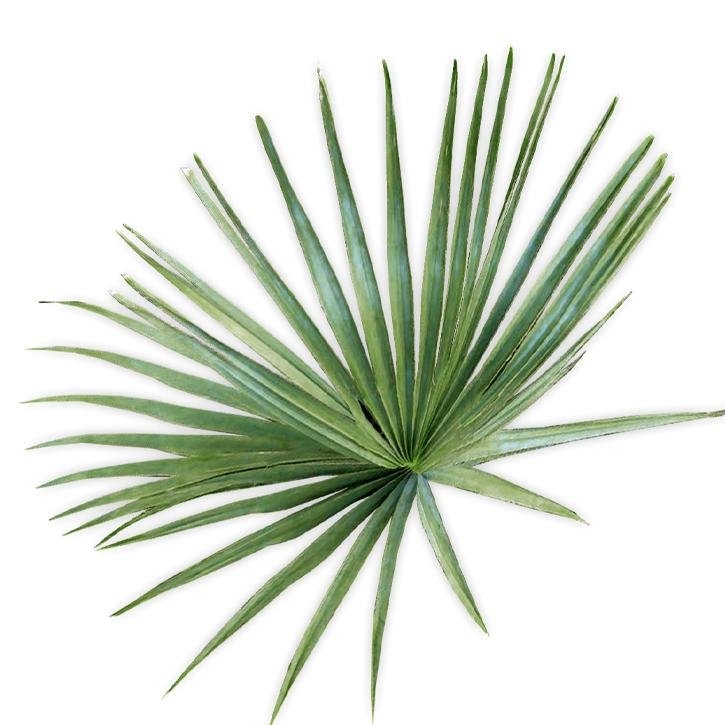Description
It’s a palm tree of up to 2 m in height with fan-shaped leaves, deeply cut through, of a bluish-green color with a sharp petiole. Flowers are small and flatten forming a spadix. Fruit is an oval-shaped drupe, blackish-blue when ripe.
It spontaneously grows in sandy soil at the southern region of the United States where forms colonies, sometimes even impenetrable.
Part used
The fruits.
Indications
- Adenoma of benign prostatic hyperplasia: moderate or non-operable cases; reduction prior adenectomy or treatment of post-surgical conditions.
- Urinary conditions associated with adenoma of benign prostatic hyperplasia: dysuria, tenesmus, nocturia, pollakiuria.
- Prostate cancer metastasis.
- Non-infectious chronic and acute prostatitis.
- Gynecological problems provoked by an excessive androgenic stimulation: hirsutism, virilescence, androgenic acne, etc.
- Diseases related with the prolactin action.
Bibliography
- Fitoterapia aplicada. J.B. Peris, G. Stübing, B. Vanaclocha. Colegio oficial de farmacéuticos de Valencia. 1995.
- Farmacognosia. Fitoquímica. Plantas Medicinales. J Bruneton. Editorial Acribia. 2ª edición.
- Fitoterapia. Vademecum de prescripción. B Vanaclocha, S Cañigueral. Editorial Masson. 4ª edición.
- The Complete German Commission E Monographs. Therapeutic Guide To Herbal Medicines. Blumenthal, Busse, Goldberg et al. American Botanical Council.
- Botanical Influences on Illness. Werbach, Murray. Third Line Press.1994.
